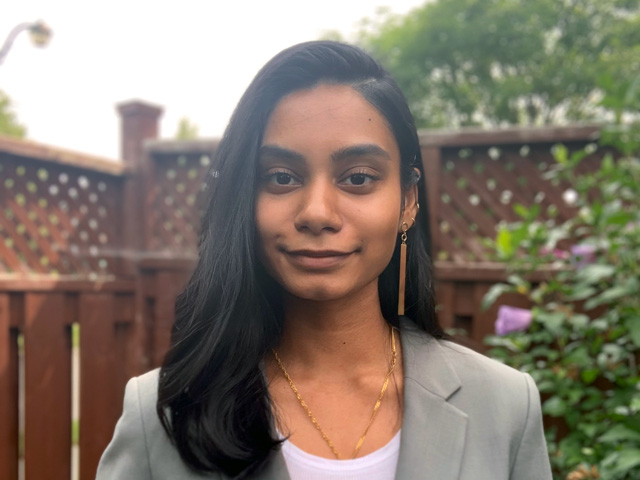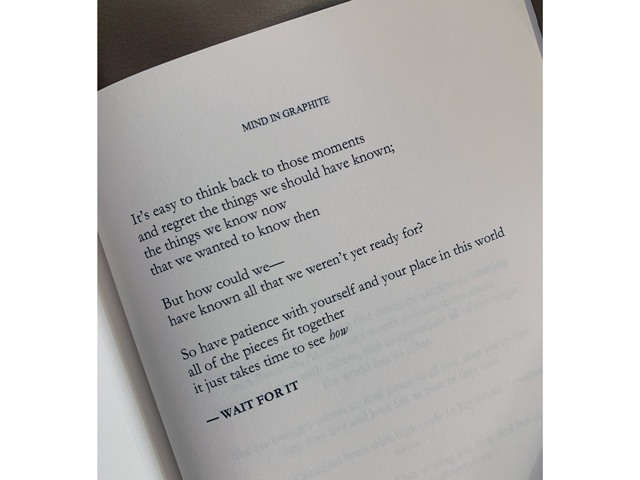Uniting the art and science of life

Ashnie Badal, scientist and poet.
When Ashnie Badal graduated with a bachelor’s degree in 2020, she was simultaneously working in the Science Discovery Zone (SDZ) and on her first book of poetry, called Mind in Graphite. The chemistry major had considered studying creative writing at university before settling on science. For most, these would seem like radically different paths. For Badal, they each offered creative avenues for exploring the world.
“Great scientists are creative thinkers,” says Badal. “You have to think outside the box to ask the right questions and find the best answers. That’s how new discoveries are made. And then there’s the communication element. If you can’t convey your scientific insights in a way that interests and connects to others, there’s a serious loss there. It’s not just what you know. It’s how you share your ideas and knowledge. So I see creativity as essential, beginning with asking questions and forming an early hypothesis right through to sharing an exciting finding.”
Badal talks a lot about connection and communication when it comes to art, science and also her work as Operations Coordinator in the SDZ. In this role, she supports members of the space along a continuum, from those interested in learning more about the innovation ecosystem to others leading a new startup. The emphasis at the SDZ on collaboration across disciplines illustrates Badal’s point about the role of creative thought and expression in science.
One aspect of the Zone that Badal really embraces is its emphasis on trying new things without being certain of the success of the outcome. Poetry works in a similar way: it is fueled by the attempt, by the vision, not by any guarantee of the final product.
And as with the scientific innovations evident over the past year and a half, the pandemic has had an impact on Badal’s creative output.
“I had been writing a lot toward the end of my academic career, which was a time of growth and change for me,” she says. “With the pandemic creating more isolation and distance between people, I felt more of a push to speak out about my own learning, my own struggles, at a time when so many people were struggling with daily life.”
While writing and revising her poetry, Badal developed a view that though change is a constant in life, profound learning happens only in moments of readiness. We don’t always know when those receptive moments will come—which means we can’t control them—but they will. Her poem “Wait For It” emphasizes this idea.

Ashnie Badal shares her perspective on growth and change in her poetry book, Mind in Graphite. Photo of poem titled "Wait for It”.
“I underwent a transformation during my undergrad,” says Badal. “I was a different person when I arrived at Ryerson than when I graduated. I had a glimpse of who I wanted to be in first year, but I wasn’t that person. My time at Ryerson formed me: being in the city, surrounded by different people and perspectives, learning about life, facing challenges and finding new strength. I poured all of that into chemistry and into poetry. In the end, I earned my degree, finished my book, and landed this role at the SDZ. Creativity is the thread that connects all of this, while also driving my personal growth.”
Badal is open to graduate work in her future, should the right research question pique her interest. For now, she continues her work in the SDZ and on the page, connecting people to their own experiences and to each other in both roles.